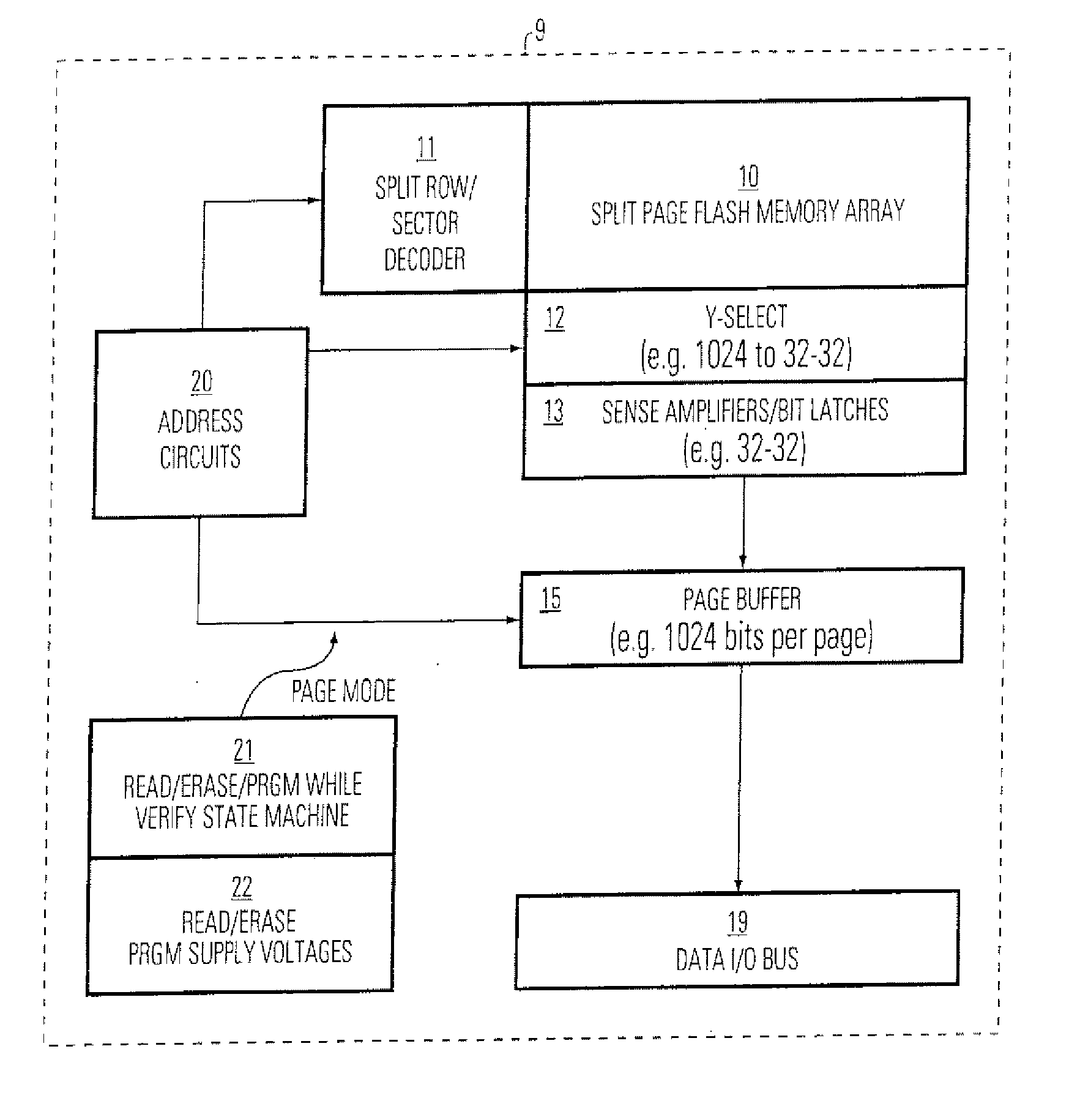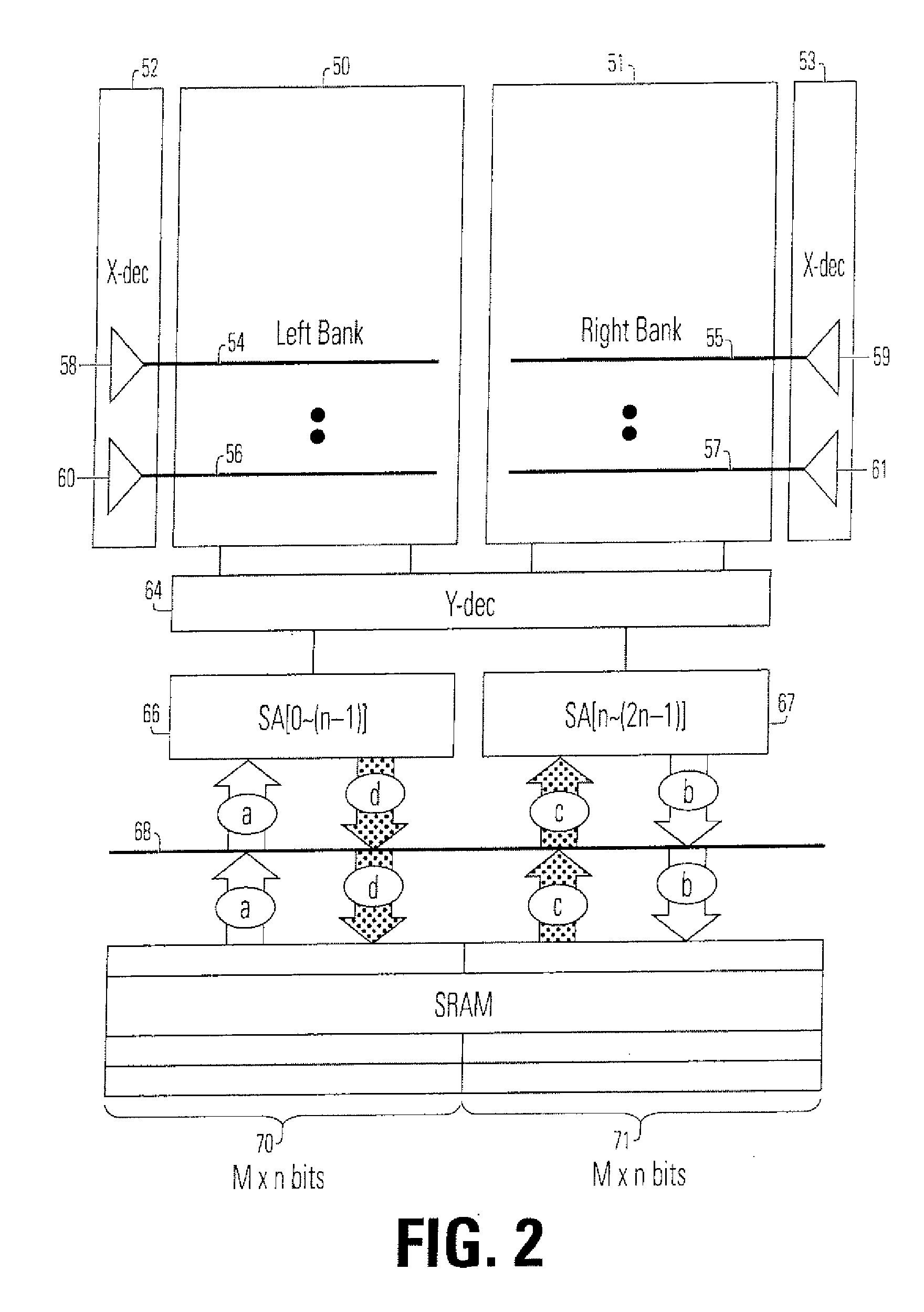Nonvolatile memory with program while program verify
a non-volatile memory and program technology, applied in static storage, digital storage, instruments, etc., can solve the problems of non-uniform levels of charge stored in the cells distributed across the array, and achieve the effect of saving substantial time in the overall program operation
- Summary
- Abstract
- Description
- Claims
- Application Information
AI Technical Summary
Benefits of technology
Problems solved by technology
Method used
Image
Examples
Embodiment Construction
[0027] A detailed description of embodiments of the present invention is provided with reference to the FIGS. 1-7.
[0028]FIG. 1 is a simplified block diagram of a single chip, integrated circuit memory device 9 supporting page mode operations and program while verify operations. The memory device 9 includes a flash memory array 10 that includes an array of memory cells typically organized into a plurality of sectors, and accessible using a plurality of bit lines, a plurality of word lines and a plurality of sector select lines. A row decoder 11 is used for accessing selected word lines and sectors. The plurality of word lines include pairs of word lines that are accessed in response to identical higher order address bits, as explained below. A Y-select column decoder 12 is used for accessing selected bit lines. A plurality of sense amplifiers 13, or other sensing circuitry, is coupled to data lines from the output of the column decoder 12, and arranged to sense two chunks of data in...
PUM
 Login to View More
Login to View More Abstract
Description
Claims
Application Information
 Login to View More
Login to View More - R&D
- Intellectual Property
- Life Sciences
- Materials
- Tech Scout
- Unparalleled Data Quality
- Higher Quality Content
- 60% Fewer Hallucinations
Browse by: Latest US Patents, China's latest patents, Technical Efficacy Thesaurus, Application Domain, Technology Topic, Popular Technical Reports.
© 2025 PatSnap. All rights reserved.Legal|Privacy policy|Modern Slavery Act Transparency Statement|Sitemap|About US| Contact US: help@patsnap.com



